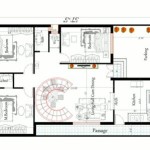Small House Plants: A Guide to Green Living in Limited Spaces
The appeal of incorporating greenery into interior design is undeniable. Plants contribute aesthetic value, improve air quality, and offer a sense of tranquility within the home. However, space constraints in apartments, condominiums, and smaller houses often present a challenge. The solution lies in embracing small house plants, which offer all the benefits of larger varieties in a compact, manageable form. This article will explore the selection, care, and benefits of cultivating small house plants within a limited living space.
The term "small house plant" is broadly defined as any plant species that typically remains under 12 inches in height at maturity when grown indoors. This size range encompasses a diverse selection of plants, from succulents and cacti to miniature versions of popular houseplants. Their compact size makes them ideal for windowsills, shelves, desktops, and other small areas where larger plants would be impractical.
Before selecting small house plants, it is crucial to assess the environment in which they will reside. Factors such as natural light availability, temperature, and humidity play a significant role in plant health and growth. Understanding these environmental conditions will help determine which plant species are most likely to thrive. A north-facing window, for example, receives significantly less direct sunlight than a south-facing window, influencing the selection of appropriate plant types.
Selecting the Right Small House Plants
The selection process should begin with an evaluation of the available light. Plants are categorized based on their light requirements: high light, medium light, and low light. High-light plants require several hours of direct sunlight daily, typically found near south-facing windows. Medium-light plants thrive in bright, indirect light, such as that found near east or west-facing windows. Low-light plants can tolerate shaded areas with minimal natural light.
Some popular small house plant options for different light conditions include:
*High Light:
Succulents such as Echeveria and Haworthia, cacti like the Thimble Cactus (Mammillaria gracilis), and herbs like Rosemary and Thyme thrive in bright sunlight. These plants are generally drought-tolerant and require well-draining soil. *Medium Light:
African Violets (Saintpaulia), Peperomia, Chinese Evergreens (Aglaonema), and prayer plants (Maranta leuconeura) are well-suited for moderate light conditions. African Violets are particularly prized for their vibrant blooms, while Peperomia offers a variety of leaf textures and colors. *Low Light:
Snake Plants (Sansevieria trifasciata), ZZ Plants (Zamioculcas zamiifolia), and Peace Lilies (Spathiphyllum) are remarkably tolerant of low-light environments. These plants are often recommended for beginners due to their resilience and air-purifying qualities.Beyond light requirements, consider humidity levels. While most small house plants adapt well to average household humidity, some, such as ferns and orchids, prefer higher humidity. This can be achieved through methods like grouping plants together, using a humidifier, or placing plants on a tray filled with pebbles and water.
Aesthetic preferences also play a crucial role. Consider the colors, textures, and overall style of your interior decor when selecting plants. Coordinating plant choices with the existing color palette and design scheme can create a harmonious and visually appealing environment.
Essential Care Practices for Small House Plants
Proper care is essential for the health and longevity of small house plants. This encompasses watering, soil selection, fertilization, and pest control. Adhering to a consistent care routine will ensure that plants thrive and contribute to a healthy indoor environment.
Watering frequency is a critical factor. Overwatering is a common mistake that can lead to root rot and plant death. The appropriate watering schedule depends on the plant species, pot size, and environmental conditions. As a general rule, it is best to allow the soil to dry out slightly between waterings. Use a finger to check the moisture level of the soil before watering. If the top inch of soil feels dry, it is time to water. Avoid letting plants sit in standing water, as this can lead to root suffocation.
Soil selection is also crucial. Most small house plants thrive in well-draining potting mix. This type of mix typically contains a blend of peat moss, perlite, and vermiculite, which provides adequate drainage and aeration to the roots. Avoid using garden soil, as it is often too heavy and compact for container gardening. For succulents and cacti, use a specialized cactus potting mix that provides even better drainage.
Fertilization provides essential nutrients to support plant growth. Use a balanced liquid fertilizer diluted to half strength every 4-6 weeks during the growing season (spring and summer). Avoid fertilizing during the dormant season (fall and winter) when plant growth slows down. Over-fertilization can lead to salt buildup in the soil, which can damage roots. It is recommended to flush the soil with water periodically to remove excess salts.
Pest control is an important aspect of plant care. Common houseplant pests include aphids, spider mites, mealybugs, and scale. Regularly inspect plants for signs of infestation. If pests are detected, treat them promptly with insecticidal soap or neem oil. Isolate infested plants from other plants to prevent the spread of pests.
Benefits of Incorporating Small House Plants into Living Spaces
Beyond their aesthetic appeal, small house plants offer numerous benefits that contribute to a healthier and more pleasant living environment. These benefits include air purification, stress reduction, and improved overall well-being.
Air purification is a significant advantage of keeping plants indoors. Plants absorb carbon dioxide and release oxygen through photosynthesis, improving air quality. Some plants are particularly effective at removing harmful toxins from the air, such as formaldehyde, benzene, and xylene. Snake Plants and ZZ Plants are known for their air-purifying capabilities and their ability to thrive in low-light conditions. These plants are particularly beneficial in urban environments where air pollution is a concern.
Stress reduction is another significant benefit. Studies have shown that being around plants can lower stress levels, improve mood, and increase feelings of well-being. The presence of greenery in the home can create a more calming and relaxing atmosphere. Caring for plants can also be a therapeutic activity, providing a sense of purpose and connection to nature.
Improved overall well-being is a holistic benefit of incorporating plants into living spaces. The combination of improved air quality, stress reduction, and visual appeal can create a more positive and healthy environment. Plants can also add a touch of nature to sterile or monotonous spaces, making them feel more inviting and comfortable. The presence of plants can also increase productivity and creativity, making them ideal for home offices or workspaces.
In conclusion, cultivating small house plants offers a practical and rewarding way to enhance living spaces. By carefully selecting plant species based on environmental conditions and aesthetic preferences, and by adhering to essential care practices, individuals can create thriving indoor gardens that contribute to a healthier and more vibrant home environment.

10 Small Houseplants Perfect For Tight Spaces Garden Design

21 Small Indoor Plants For 2024 Top Houseplants
:max_bytes(150000):strip_icc()/golden-pothos-indoor-plant-1120-e27f0004f04b4c6eb03155d2e807957b.jpg?strip=all)
The Best Indoor Plants For Small Spaces

10 Small Houseplants Perfect For Tight Spaces Garden Design

10 Small Houseplants Perfect For Tight Spaces Garden Design

10 Small Houseplants Perfect For Tight Spaces Garden Design

25 Small Indoor Plants That Need Low Sunlight Less Water

Indoor Plants The Home Depot

Top 10 Houseplants Thompson Morgan

Discover The Most Beautiful Small Indoor Plants To Brighten Your House Floraqueen En








